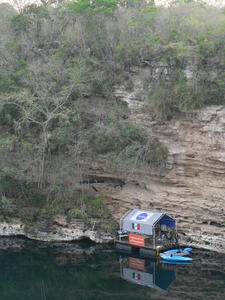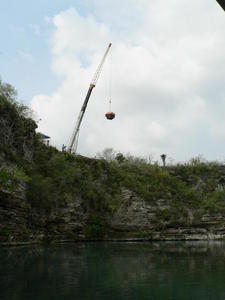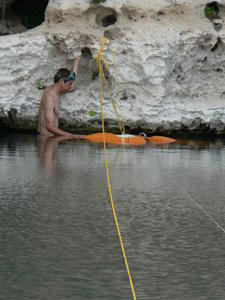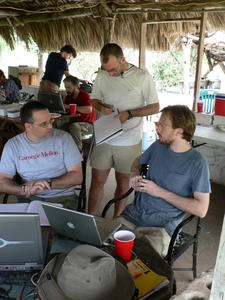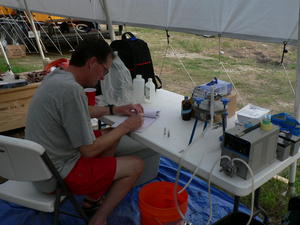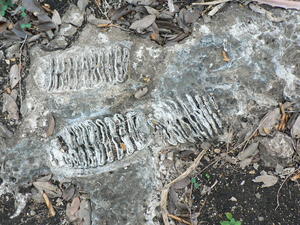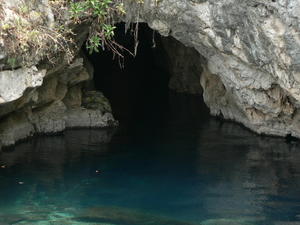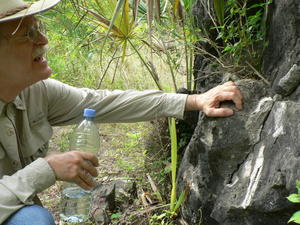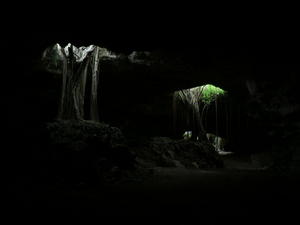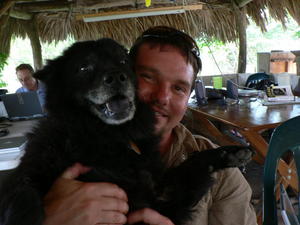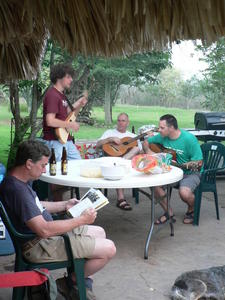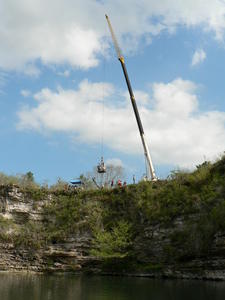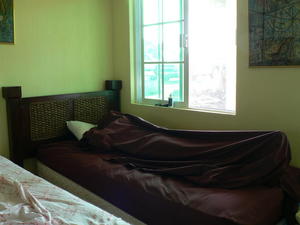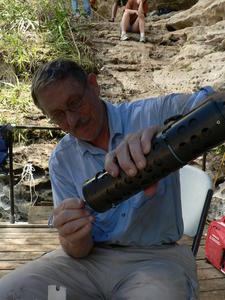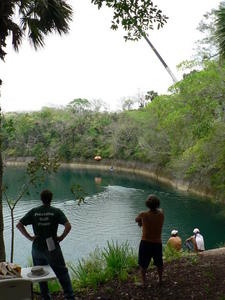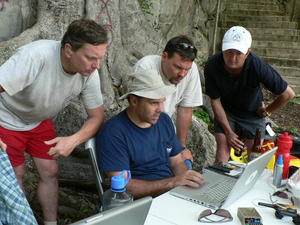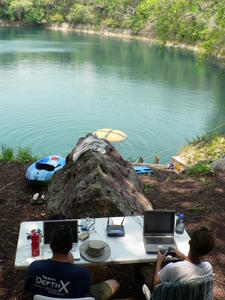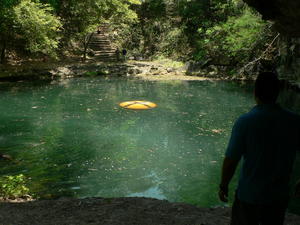
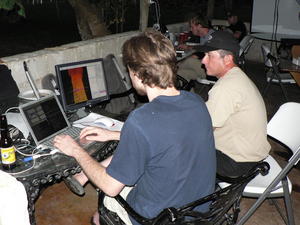
We put the vehicle back in the water on the 16th and did a checkout of the payload and autonomy software.
With this additional functionality in place, we again dove deep and collected water samples along the way.
This time we reached 290m and pushed under an overhang into the deepest section.
The sonar data collected on this dive allowed us to create our initial map, leaving only a small segment of the very bottom unknown.
The sinkhole appears to be a deep shaft with a sloping floor around 300m.
According to our environmental sensors, the water column is quite uniform throughout.
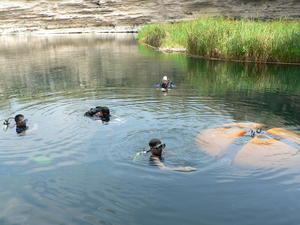
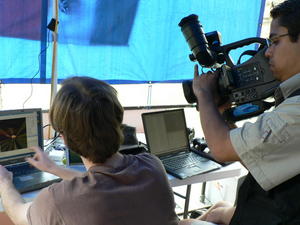
The morning of the 17th was spent giving interviews to the press and shooting underwater video.
Many reporters were present including crews from local stations, NASA and various magazines.
By noon the fervor died down and we returned to our scientific investigation by starting a systematic study of the cenote walls.
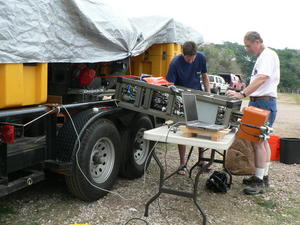
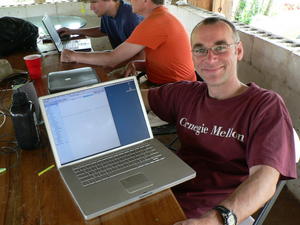
There were no operations between the 18th and the evening of the 25th due to unforseen circumstances.
We spent the down-time doing vehicle maintenance, analyzing telemetry, archiving data and generally catching up on work.
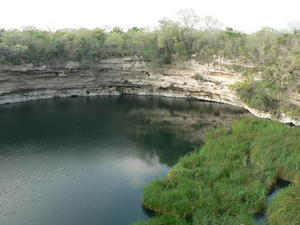
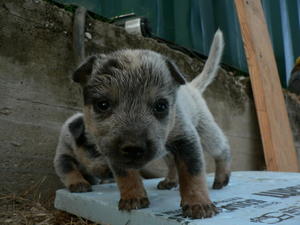
On the afternoon of the 28th we packed and cleaned.
Cleaning up proved to be a lot of fun;
we had to release the floating zacaté and find a new home for some puppies.
Around sunset we left Rancho Azufrosa, concluding the DepthX field operations.
